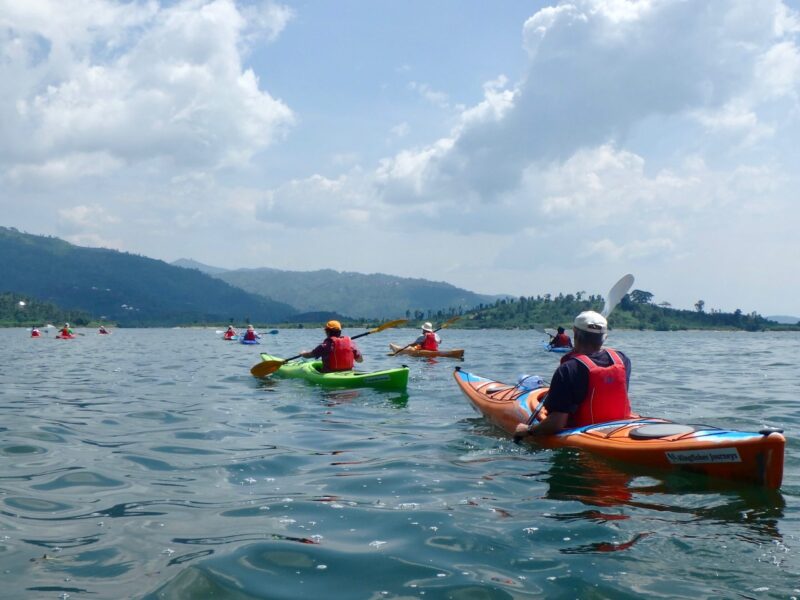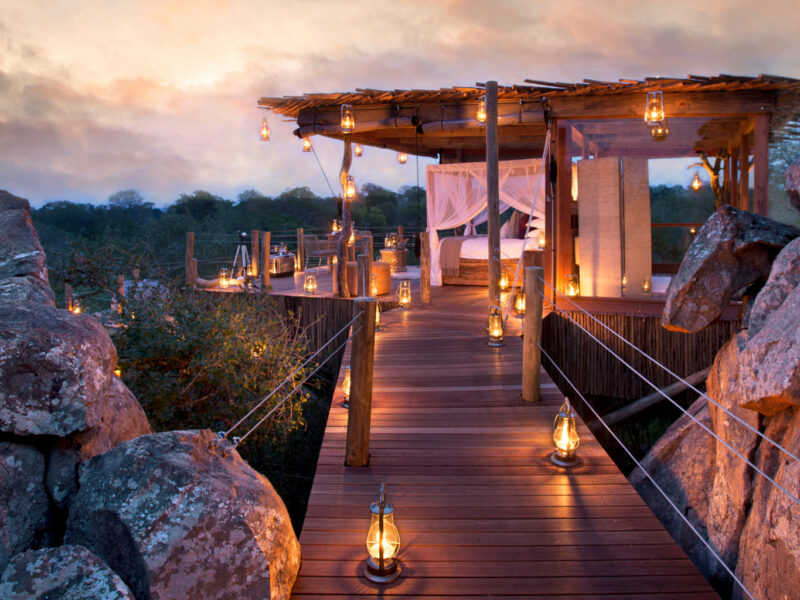When to Visit Rwanda: May
May in Rwanda is a transitional month—still touched by the lingering rains of the long wet season, yet steadily drying out as the country prepares to welcome the drier months ahead. It’s a quiet time, marked by dramatic landscapes, reduced crowds, and a richness in both nature and atmosphere. For travelers who don’t mind a little unpredictability and want to experience Rwanda at a slower, more reflective pace, May offers a balance between beauty and solitude.
Weather and Atmosphere
May is still part of Rwanda’s long rainy season, though the intensity and frequency of the rains begin to ease as the month progresses. You can expect afternoon showers or occasional downpours, particularly in the first half of the month, but mornings often start clear and bright. Rainfall varies by region, with the western highlands and forested areas like Nyungwe receiving more than the drier eastern plains.
Daytime temperatures are comfortable, averaging 24°C to 26°C (75–79°F), and cooler in the evenings, especially in the mountainous north and southwest. With the rain still freshening the land, Rwanda is painted in its most vibrant shades—rolling hills covered in dense green foliage, banana groves shimmering with dew, and tea plantations glowing under soft light.
Gorilla Trekking in a Quieter Season
While May’s wetter conditions may not seem ideal for gorilla trekking in Volcanoes National Park, the experience remains deeply rewarding. The trails can still be muddy and more physically demanding, especially early in the month, but the upside is significant: there are fewer tourists, greater availability for trekking permits, and often more personalized attention from guides.
In some years, the Rwanda Development Board may offer discounted permits during low-season months like May, making this a more budget-friendly time to experience a once-in-a-lifetime encounter with mountain gorillas. The forest is lush and misty, the air crisp, and sightings are just as extraordinary as in the peak seasons.
Nyungwe Forest: Moody and Magical
Nyungwe Forest in May is alive with texture and sound. Though the trails may be damp, the forest is teeming with activity. Birdlife is especially vibrant in the aftermath of the rains, and sightings of butterflies, orchids, and rare primates are all possible. Chimpanzee tracking is still on offer, though more weather-dependent, and the towering canopy walkway remains a breathtaking experience when mist hangs over the treetops.
The atmosphere in Nyungwe during May is ideal for those who appreciate nature in its rawest form. With the forest glistening from recent rains, it feels like stepping into a world suspended in time—quiet, alive, and utterly unique.
Tranquility on Lake Kivu
Lake Kivu is one of the most serene places to be in Rwanda during May. The rains taper off here earlier than in the mountains, making it a great time to enjoy the lake’s laid-back charm. Whether you’re reading on a veranda in Gisenyi, kayaking through calm morning waters, or exploring nearby fishing villages, the pace is slow and restorative.
Fewer visitors in May mean you often have this spectacular lake—and its picturesque lodges—nearly to yourself. The dramatic contrast between the misty hills and glassy water adds to the area’s dreamlike quality.
Cultural Travel and Reflection
May continues Rwanda’s national genocide commemoration period, known as Kwibuka, which began in April and spans 100 days. Across the country, communities gather in remembrance of the 1994 Genocide against the Tutsi. Visitors during this time can pay their respects by visiting memorials, attending local ceremonies, or simply engaging with Rwandans in moments of reflection and conversation.
Traveling during Kwibuka brings a different layer of understanding to your journey—one that goes beyond wildlife and landscapes. It’s a chance to witness Rwanda’s remarkable transformation and resilience, and to understand how deeply history, healing, and hope are woven into the country’s soul.
Travel Tips and Considerations
Traveling in May requires preparation for changing weather. Waterproof jackets, durable hiking shoes, and rain covers for gear are essential. Some rural roads may still be muddy, so plan transportation accordingly. Working with a local tour operator is helpful for navigating shifting conditions and ensuring safe access to remote destinations.
On the upside, May is part of the low season, so you’ll often find lower prices on accommodations, greater availability for permits, and more flexibility in customizing your itinerary. If you’re looking for depth, peace, and a touch of adventure, May is a beautiful time to go.




